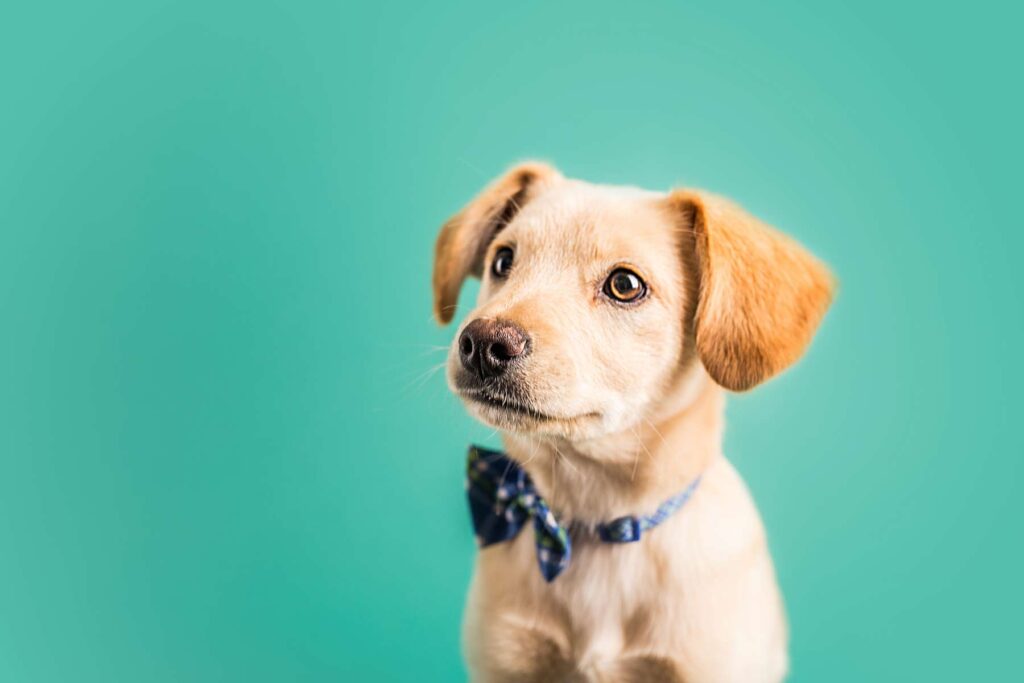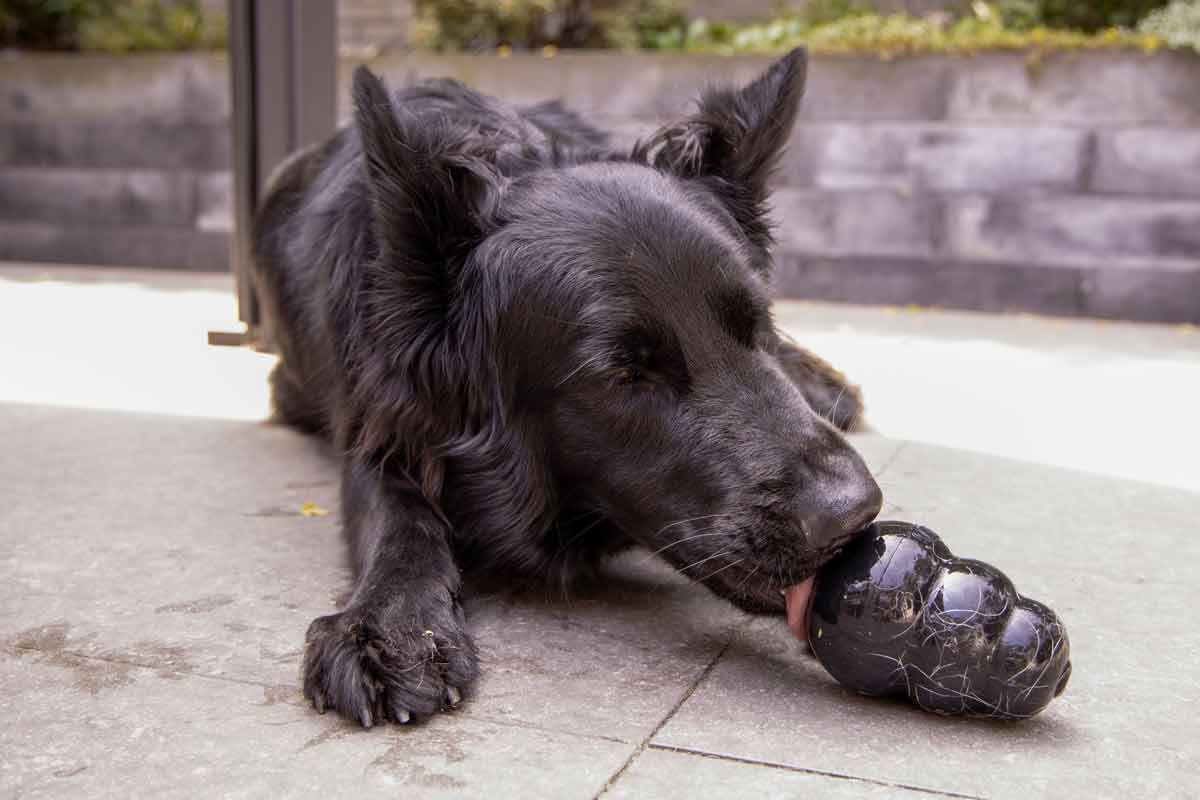Bringing your new puppy home is a special and exciting experience! If you are a new pet parent, it might be a bit daunting trying to prepare for your new dog. You might not yet know everything you need, and that is totally okay!
Our comprehensive new puppy checklist covers all the essentials you need to give your furry friend the warmest welcome! Here you will find a list of necessary items and explanations of why your puppy needs them to make sure you are completely prepared.
Use our new puppy checklist to ensure that both you and your pup have a smooth transition when you bring them home!
Vet Contact
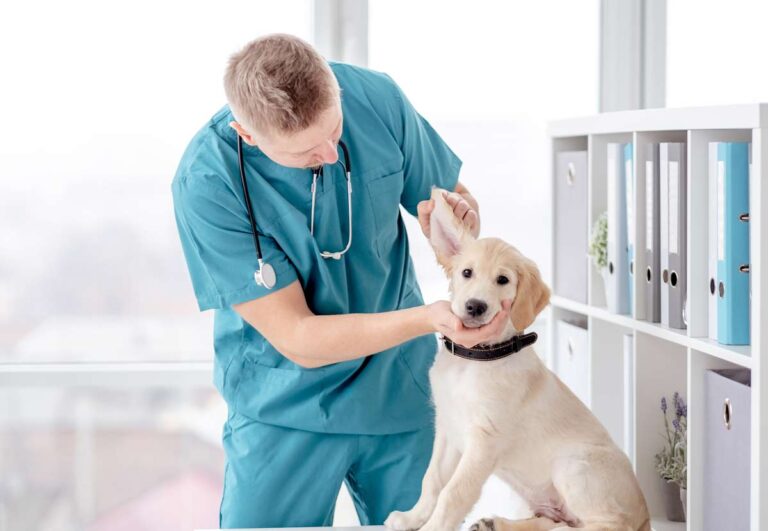
One of the most important steps on your new puppy checklist is finding a local veterinarian who you trust. Your veterinarian plays a vital role in the health and well-being of your puppy. It’s a good idea to connect with them and set up an appointment before you bring your puppy home.
Your vet is responsible for providing necessary vaccinations and routine health checkups. They can offer you guidance on nutrition, behavior, and unplanned health issues that may arise. Your vet can also offer advice on microchipping, spaying or neutering, and flea and tick prevention.
Veterinary care in the early puppy stages can identify and address any potential health issues and ensure that your new pup is off to a healthy start. This also helps your dog get used to vet visits, which can reduce the stress and anxiety associated with these appointments.
Establishing a relationship with your veterinarian from puppyhood can ensure that you have a trusted resource for the rest of your dog’s life. Proactively finding a vet contact before your puppy arrives means that you will have a resource for any emergency situations or health-related questions. A reliable vet is a critical component of long-term pet care and being a responsible dog parent.
ID Tags With Contact Information
While many places require dogs to have ID tags by law, it’s a good idea to make sure your dog has proper identification, no matter where you live. The tags should have your dog’s name, your phone number, your address, and “microchipped” if applicable.
According to The Journal of the American Veterinary Medicine Association, 10 million cats and dogs are lost each year. 22% of lost dogs who enter shelters are reunited with their families and 52% of microchipped pets are reunited with their owners.
Although it’s not officially on the new puppy checklist, microchipping is a way to guarantee that your pup has identification wherever they go. In the unfortunate scenario that your new dog gets startled by fireworks and runs off, microchipping increases the chances of a speedy reunion with your pup.
Sturdy Leash And Adjustable Collar
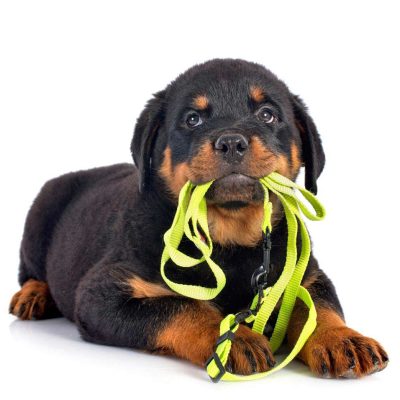
Puppies are curious and can run towards danger, like moving cars or unfamiliar animals. A durable leash will help keep your puppy safe and prevent them from running off, especially in public areas. A good leash can also help you teach your puppy to walk beside you and heel. A flimsy leash might not provide the necessary control for effective training, especially if the puppy is inclined to pull or lunge.
It’s important that your new dog’s collar is adjustable. New puppies can be tiny, but you will be amazed at how quickly they grow! The difference in size after just a week when it comes to a growing dog will shock you. Because they grow so quickly, it’s important to have a collar that can grow with your dog. Make sure you can fit two fingers in between your puppy’s neck and the collar.
Food And Water Bowls
Another important item on the new puppy checklist is dedicated food and water bowls for your puppy. Making sure your puppy has consistent access to clean water is crucial for their health and hydration.
Stainless steel bowls are a smart choice for both food and water; they are durable, easier to clean than other materials, and are less likely to harbor bacteria that can make your puppy sick. Additionally, the heavier stainless steel material is less likely to tip or spill, making dinner time less stressful for both you and your pup.
Having sanitary, durable water and food bowls creates a comfortable environment for your puppy. This ensures that they will establish a healthy eating routine, which helps with their overall digestion and dietary habits.
Our recommendation: Basic Stainless Steel Non-Skid Dog Bowls
Food Formulated For Puppies
Puppy food is specially formulated to make sure young dogs get the nutrition they need for their physical and mental development. Puppies need proteins and fats to help support their growing bones, muscles, and organs.
Puppy food contains necessary vitamins, and minerals like calcium for strong bones and DHA for brain development. These nutrients also give puppies the energy they need to support their growing immune systems.

Feeding a new puppy food that is formulated for adult dogs or older dogs can lead to imbalanced growth and digestion issues. Providing puppy-formulated food for your new fur baby is the first step you can take to ensure their long-term health and nutrition.
Additionally, it’s a good idea to consider some type of puppy-proof food storage. This prevents your puppy from getting into their food unsupervised and ensures that their food stays fresh.
Puppy Training Treats
Puppies are highly motivated by food, so training treats are one of the most effective tools when it comes to raising your new puppy. Training treats are typically smaller than regular dog treats and tend to be lower in calories. This prevents overfeeding during frequent training sessions, which can make your puppy sick.
Training treats serve as positive reinforcement, which makes it easier to teach puppies commands. You can use these tasty treats to keep your new puppy’s attention and mark good behaviors by rewarding them. Praising your dog and giving them treats also strengthens your bond and establishes trust with your dog, making the training process more effective and enjoyable for both of you!
Dog Crate
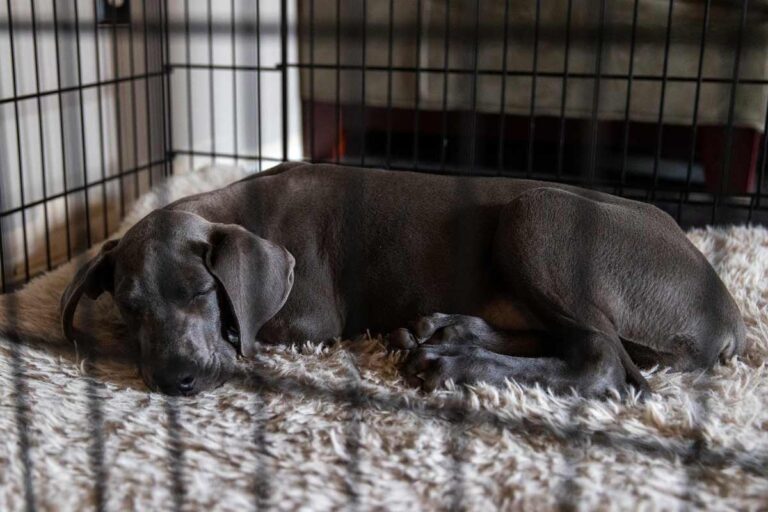
A crate can be extremely beneficial in the development and well-being of your new puppy. For one, it is important for your dog to have security and their own space. Much like a den to a wolf, a dog crate is a safe space your puppy can go when they are nervous or tired.
Your dog’s crate also plays a pivotal role when it comes to potty training. Dogs instinctively try to avoid soiling their sleeping area, so they learn to control their bladder and bowel movements by not going to the bathroom in their crate.
Additionally, the crate also helps with the safety and management of your new puppy. Puppies are incredibly curious and love to explore. The crate makes sure they don’t wander into potentially dangerous situations when you have to leave them unsupervised.
Don’t just think of your dog’s crate as a means of containment. When used correctly, a crate actually becomes a positive retreat for the puppy, not a place of punishment. It is a great tool to help instill routine and provide a structured environment. A crate can act as a personal safe space for your new puppy and reduce anxiety. It also acts as a convenient way to transport your new dog.
Soft Bedding
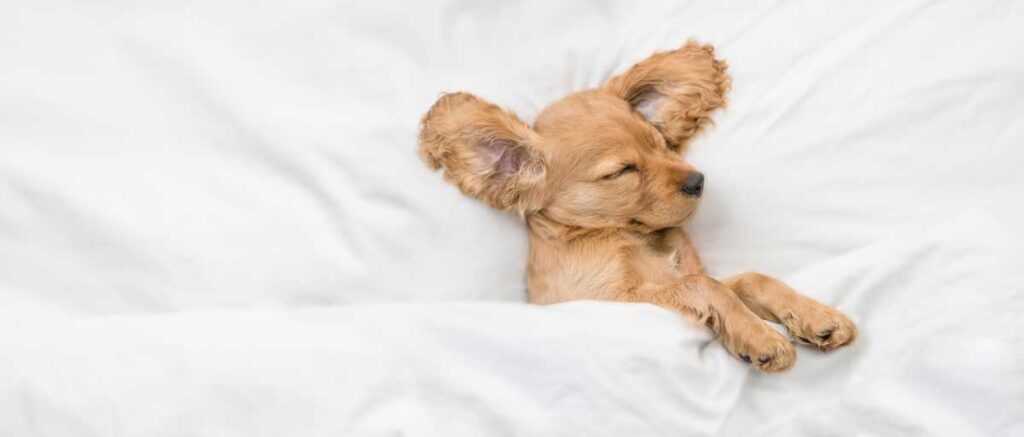
As new puppies grow and develop, they spend a significant amount of time sleeping. It’s important to provide a comfortable, secure resting place while they adapt to their new home without their mother or littermates.
Adding a soft dog bed or a warm, cozy blanket to you new puppy checklist helps your dog feel safe and secure, which is essential for their emotional and physical health. For puppies with anxiety, their dog bed can become a soothing and safe area, reducing their stress and helping them to relax.
We mentioned earlier that when used correctly, the crate can become a safe place for dogs. Having soft, warm bedding inside the crate can help teach the puppy that it’s a safe and secure retreat for them. Quality bedding also supports bone and joint development by cushioning their growing bodies.
Poop Bags
The easiest step we can take towards becoming responsible pet parents is to clean up after our dogs. Dog waste contains harmful bacteria and parasites that can contaminate public areas. Not cleaning up your dog’s waste poses health risks to people and other animals, especially children who play outdoors. Plus, no one likes to step in dog poop.
Most communities and towns have regulations requiring dog owners to clean up their pet waste. Poop bags are the easiest way to comply with these rules and laws. Whether you are going out for a quick potty break, heading to the park, or just taking a morning stroll, carrying poop bags reflects respect for your community.
By using poop bags to pick up and dispose of your dog’s waste, you are contributing to public health and protecting the environment.
Our recommendation: Leak Proof, Extra Thick Waste Bags
Puppy Toys
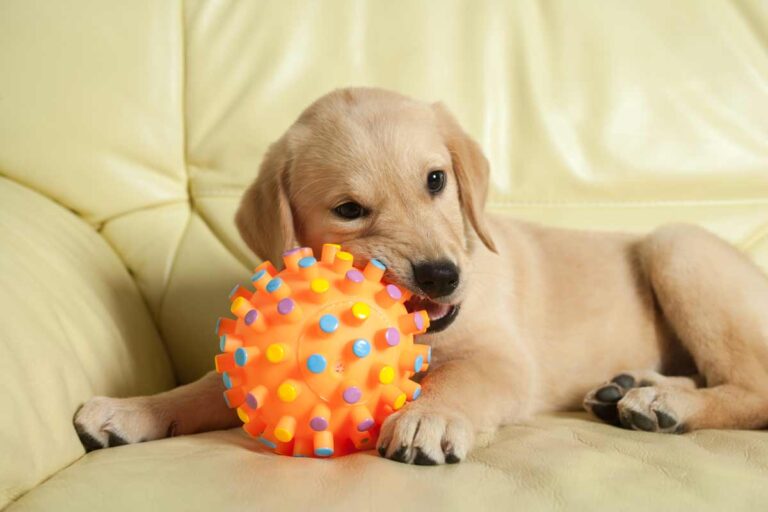
Having a variety of different toys on your new puppy checklist will aid in their mental stimulation and physical exercise. Click here to learn about the importance of mental stimulation for dogs!
Chew toys are important for teething puppies. A chew toy can help to relieve tooth discomfort and sore gums. It also provides a safe chewing outlet, which means your puppy is less likely to chew on things they aren’t supposed to, like your coffee table.
Squeak toys are great because they capture a dog’s attention with the sound and can provide lots of entertainment. Just be sure you supervise playtime so that your puppy doesn’t tear out the squeaker, which can be a choking hazard.
Interactive toys, also known as puzzle toys, are really good for enhancing brain development and providing mental stimulation. These toys usually dispense treats and can keep your puppy occupied for hours.
Plush toys can be comforting to puppies who are getting used to their new homes. Like a child’s blanket, these soft and cuddly toys provide a sense of security for your new puppy. Just keep an eye out for small parts that could become choking hazards.
No matter which toys you go with, playing with your dog strengthens your bond and helps establish trust. Engaging with your dog while they play aids in their socialization and teaches them how to interact with objects and their environment.
Pro Tip: If you have not heard of KONG dog toys, check out our complete guide. Their puppy chew toys are great for teaching appropriate chewing behavior while soothing puppy teeth. Widely recommended by vets, KONG toys are made from natural rubber and offer products to satisfy your dog’s chewing instincts in every life stage.
Basic Grooming Supplies
In order to maintain your new puppy’s health and hygiene, you need to have some basic grooming supplies on hand at home. Regular grooming keeps your pup looking their best and increases the likelihood that you will notice signs of health issues like skin irritations, parasites, or other things that require a vet visit.
Your puppy is going to make messes and get dirty. Having puppy-specific shampoo is required to keep their coat clean without stripping away their natural oils. Puppy shampoo is also specially formulated so that it doesn’t irritate their sensitive skin. Grooming wipes are also good to have for messes that don’t require a bath, but still need to be cleaned up.
Depending on your puppy’s coat, you will need a brush or comb to remove loose fur or hair and dirt. Regular brushing prevents mats and tangles, especially in longer-haired breeds and keeps their coat healthy by improving blood circulation.

Taking care of your puppy’s nails is important for their overall health. Long nails can cause pain and walking issues. Proper nail care prevents discomfort and can cause less wear and tear on your floors and furniture. It’s important to invest in a quality pair of nail clippers or a nail grinder, designed specifically for dogs.
Unfortunately, puppy teeth are often overlooked when people make their new puppy checklists. Regular brushing with a puppy-appropriate toothbrush and toothpaste helps prevent dental issues like plaque buildup, tooth decay, bad breath, and gum disease. Providing chew toys and dental treats also helps to clean your dog’s teeth and gums. Not taking care of your puppy’s teeth can lead to more serious health problems, like infections. This could end up costing you a lot of money down the road.
Spending time grooming your dog is critical for their health and it’s also another way to bond with them. New puppies can be wary of grooming, so patience and consistency are important. Take time to reward them with positive and gentle reinforcement. This will help them tolerate and maybe even enjoy the process!
You can visit the AKC to find breed-specific grooming recommendations.
Pro Tip: Lick Mat
If your new furry family member has a hard time with grooming (either they can’t keep still or they genuinely dislike the process) there is a very helpful tool called a lick mat! It’s a small mat with a textured surface and grooves. You can smear peanut butter on the mat and let your dog go to town! The lick mat surface encourages licking and the grooves make your pup have to work extra hard to get the peanut butter out. This distraction will hopefully allow you to get some grooming down while also exercising your dog’s brain!
Our recommendation: Textured Lick Mat 2 Pack With Suction Cup Bottom
Basic Health Care Supplies
Puppies are curious and playful, and accidents happen. You can prepare for small injuries by having a basic first-aid kit on your new puppy checklist. Tweezers, gauze, antiseptic wipes, adhesive tape, and a spray to prevent them from licking wounds are all helpful to have on hand. These supplies can help address any small wounds or injuries your puppy might have.
Car Safety Restraint
Just like humans wear seatbelts to travel safely in vehicles, your puppy should have some sort of safety restraint. Securing your puppy prevents injuries from sudden stops, turns, or accidents. This will keep your pup safe from jumping out of doors or windows. It also prevents them from distracting you while driving and decreases the likelihood of accidents caused by such distractions.
In the unfortunate event of an accident, a safety restraint will prevent your puppy from being thrown around or worse, ejected from the vehicle. There are many ways to keep your pup safely restrained in the car, including dog seatbelts, travel crates, crash harnesses, and pet barriers. Car safety is a critical component of your dog’s well-being.
New Puppy Checklist: Some Additional Considerations
There are so many products and tools out there that can help new dog owners. While these items are not on our main new puppy checklist, they are definitely worth considering when it comes time to welcome your pup home.
A Training Plan
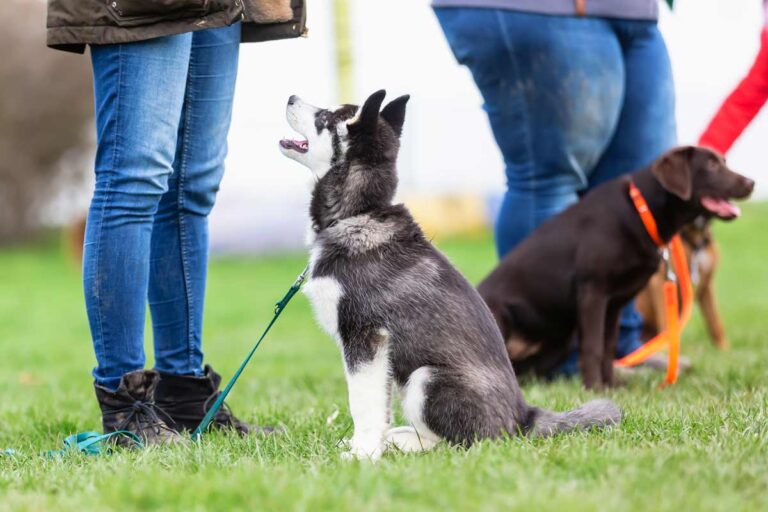
Training your dog can prevent destructive behaviors, enhance your bond, and ensure a happier dog overall. Training also helps with socialization and teaches your puppy how to interact with the world around them.
Creating a training plan will foster good behavior and help your new puppy understand expectations and boundaries in their new home. Whether you decide to attend a basic obedience training class, hire an in-home trainer, or train your dog yourself, training will make dog ownership a rewarding and enjoyable experience for both you and your pup.
Potty Training Supplies
Accidents happen, especially when you are teaching a new puppy not to go in the house. An enzymatic cleaner breaks down and eliminates orders, but also targets proteins in urine and feces, which act as scent markers and encourage dogs to go in the same area again.
Puppy pads can offer a solution for indoor bathroom needs for apartment living or limited outdoor access. They can absorb messes and make clean-up easier. Keep in mind that puppy pads can make it difficult for your dog to learn to go to the bathroom properly outside.
Pet Insurance
Pet insurance for puppies can offer several advantages including unexpected medical costs for emergencies, surgeries, and illnesses. Enrolling your puppy at an early age can mean lower premiums and better comprehensive coverage since your puppy probably doesn’t have any pre-existing conditions. Some pet insurance will cover vaccinations and wellness visits, which will be frequent during the puppy stage. You should explore pet insurance if you don’t want to worry about high, out-of-pocket vet expenses.
Treat Training Pouch
A training treat pouch can be a helpful tool when trying to train a new puppy. This storage pouch is designed to be worn around your waist or over your shoulder. This gives you easy access to treats, allowing you to reward your puppy’s good behavior immediately, which is crucial for positive reinforcement.
Baby Gates Or Playpen
Baby gates and playpens are some great tools to consider when managing your puppy’s environment and play area. These barriers allow more freedom than the crate, while still protecting your puppy from dangerous areas of the house. Having a controlled area that your puppy can play and rest in without constant supervision will give you peace of mind.
Slow Feeder
Puppies who eat their food too quickly are at risk for choking, bloating, digestion issues, and regurgitation. A slow feeder is a specially designed bowl, usually with ridges or obstacles, which encourages slower eating. This ensures that your puppy is getting all the nutrients from their food and promotes healthier eating habits by turning mealtime into a challenge.
New Puppy Checklist: The Takeaway
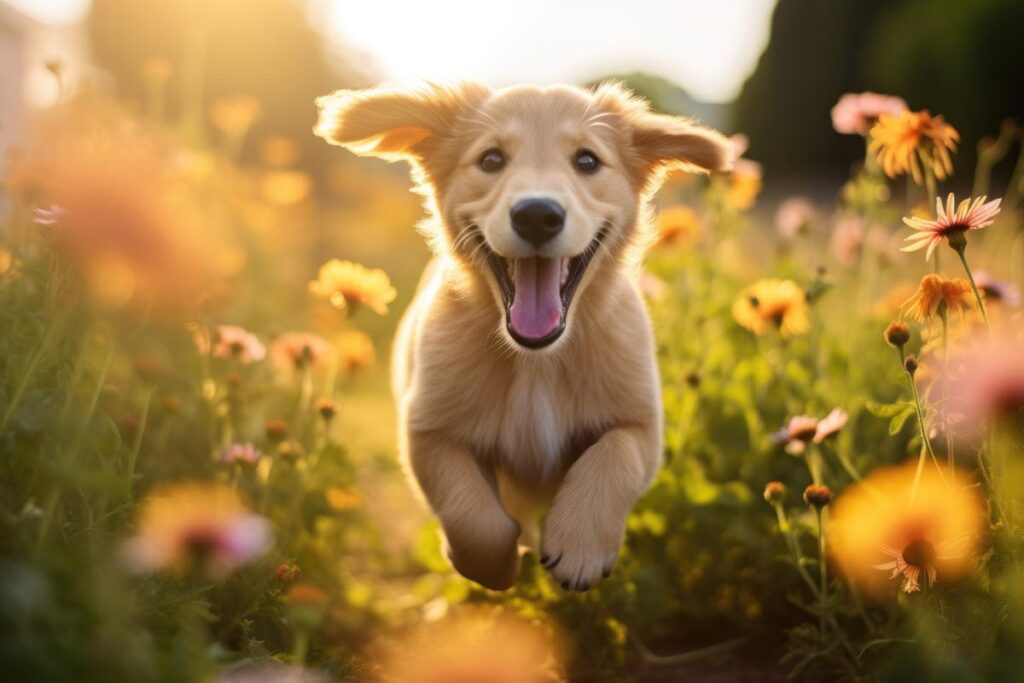
A new puppy checklist is the best way to ensure a smooth transition for both you and your new furry family member. Starting off with the right supplies and information is the easiest way to prepare for becoming a successful puppy parent. A new puppy checklist can also helps alleviate potential stress and challenges that come with owning a new dog.
Now that you understand the importance of creating and nurturing and safe environment for your puppy, you can pave the way for a healthy and happy relationship with your dog. Help your canine companion grow and thrive by downloading our printable, New Puppy Checklist!

